
Overview
The National Career Clusters Framework (NCCF) had a comprehensive overhaul this June, taking the NCCF from a simple list of 17 industry clusters to an intersectional and interconnected system for thinking critically about career pathways.
There are now 14 industry clusters that each fall under one of six larger umbrellas known as “cluster groupings” and have multiple “sub-clusters” within each industry. Some of the clusters are now known as “cross-cutting clusters” which means the skills learned for those clusters apply across most industries. For example, the new “Digital Technology” cluster is a cross-cutting cluster. All these clusters revolve around 12 central career ready practices that have 30 specific skills associated with them.
Here is a table from the NCCF technical report showing what was combined, renamed, removed, or reorganized between the old clusters and the new clusters, followed by the new framework “wheel”:
Cluster Groupings & Cross-Cutting Clusters
The six cluster groupings are defined by the authors of the framework as, “Large purpose-driven meta-sectors that help guide learners toward Clusters that are aligned with their interests, their sense of purpose, and the impact they want to make on their communities” (NCCF Guide Book). Here is a table showing the cluster groupings and their clusters.
| Cluster Grouping | Clusters Included |
| Building & Moving | Advanced Manufacturing Construction Supply Chain & Transportation |
| Caring for Communities | Education Healthcare & Human Services Public Service & Safety |
| Cultivating Resources | Agriculture Energy & Natural Resources |
| Investing in the Future | Financial Services |
| Creating & Experiencing | Arts, Entertainment, & Design Hospitality, Events, & Tourism |
| Connecting & Supporting Success | Digital Technology* Management & Entrepreneurship* Marketing & Sales* |
*Cross-cutting cluster
The last three clusters in the table are considered cross-cutting clusters because they advance career readiness skills that are applicable across all industries. These large umbrella groupings help job seekers narrow down their job search, understand what kind of career they want to pursue from a “big picture” angle, and reflect on how their skills might transfer between industries over the course of their career path. For example, there is a lot of overlap in the soft skills needed in the Caring for Communities cluster grouping, because teachers, nurses, and police officers all need communication and conflict resolution skills.
Clusters & Sub-Clusters
The 14 clusters are what we are most familiar with and can be called “industries.” The sub-clusters are new groupings within each industry of jobs that have very similar skillsets. Here is a table showing how these are organized:
| Cluster (Industry) | Sub-Cluster |
| Advanced Manufacturing | Engineering Industrial Machinery Production & Automation Robotics Safety & Quality Assurance |
| Construction | Architecture & Civil Engineering Construction Planning & Development Equipment Operation & Maintenance Skilled Trades |
| Supply Chain & Transportation | Air & Space Transportation Ground & Rail Transportation Maintenance & Repair Marine Transportation Planning & Logistics Purchasing & Warehousing |
| Education | Early Childhood Development Education Administration & Leadership Learner Support & Community Engagement Teaching, Training & Facilitation |
| Healthcare & Human Services | Behavioral & Mental Health Biotechnology Research & Development Community & Social Services Health Data & Administration Personal Care Services Physical Health |
| Public Service & Safety | Emergency Response Judicial Systems Local, State, & Federal Services Military & National Security Public Safety |
| Agriculture | Agribusiness Agricultural Technology & Automation Animal Systems Food Science & Processing Plant Systems Water Systems |
| Energy & Natural Resources | Clean & Alternative Energy Conservation & Land Management Ecological Research & Development Environmental Protection Resource Extraction Utilities |
| Financial Services | Accounting Banking & Credit Financial Strategy & Investments Insurance Real Estate |
| Arts, Entertainment, & Design | Design & Digital Arts Fashion & Interiors Fine Arts Lighting & Sound Technology Media Production & Broadcasting Performing Arts |
| Hospitality, Events, & Tourism | Accommodations Conferences & Events Culinary & Food Services Travel & Leisure |
| Digital Technology* | Data Science & AI Network Systems & Cybersecurity IT Support & Services Software Solutions Unmanned Vehicle Technology Web & Cloud |
| Management & Entrepreneurship* | Business Information Management Entrepreneurship & Small Business Leadership & Operations Project Management Regulation |
| Marketing & Sales* | Marketing & Advertising Market Research, Analytics, & Ethics Retail & Customer Experience Strategic Sales |
*Cross-cutting cluster
Each sub-cluster has multiple jobs within it, so for example the “Skilled Trades” sub-cluster includes job categories like welder, electrician, and plumber.
If your learners are just starting their career path, they might want to start at the cluster groupings and zoom into the clusters then the sub-clusters to explore career paths. Alternatively, if your learners are transitioning between careers, they might want to start with their own previous job experience and zoom out to the sub-cluster or cluster level to discover how their skills might offer them new opportunities in different but related lines of work. This strategic funneled approach makes career exploration a lot less daunting!
This slider shows examples of how the cross-cutting clusters apply to every industry. To download or print these images visit the NCCF project one-pagers for learners site.
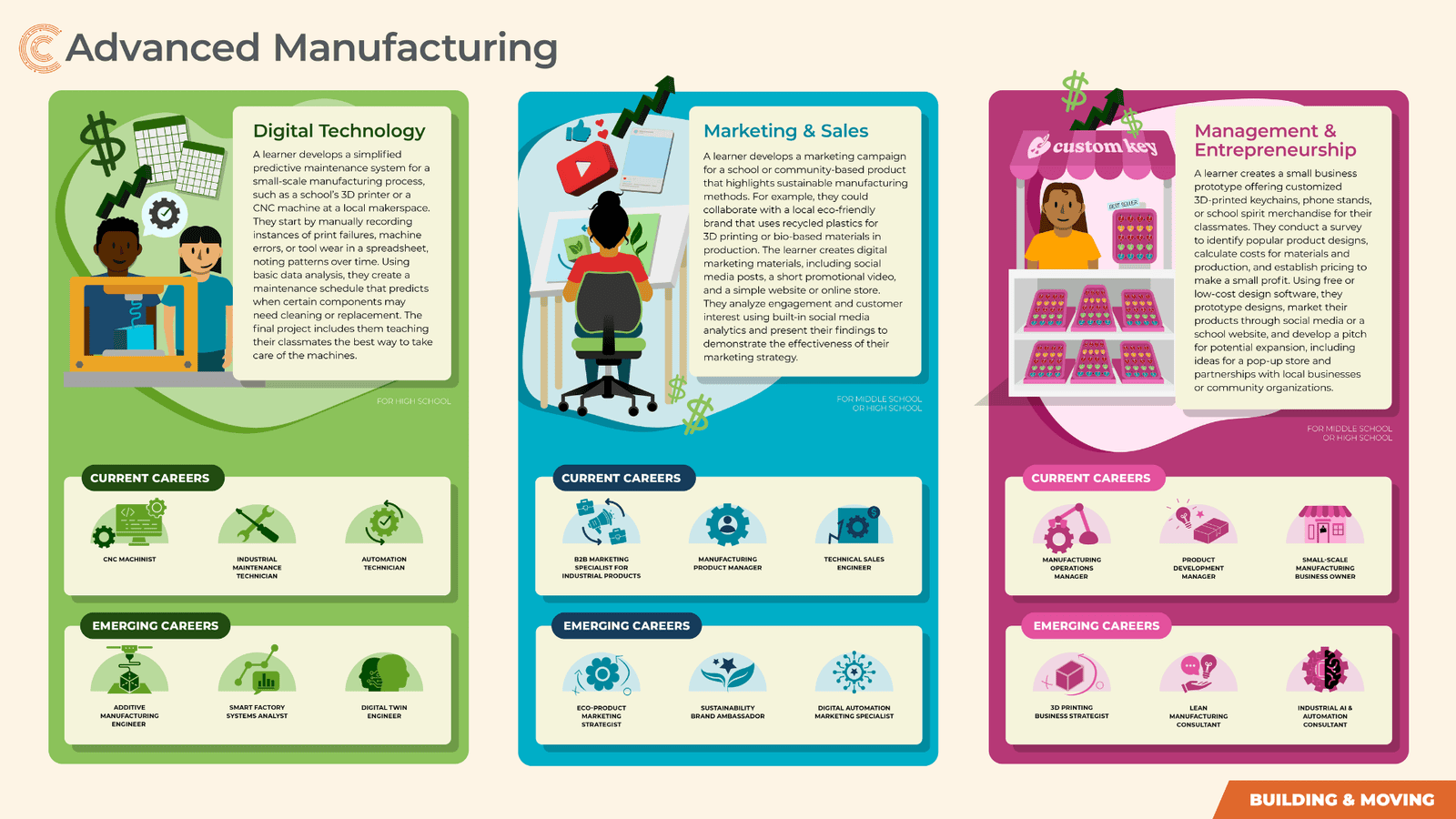
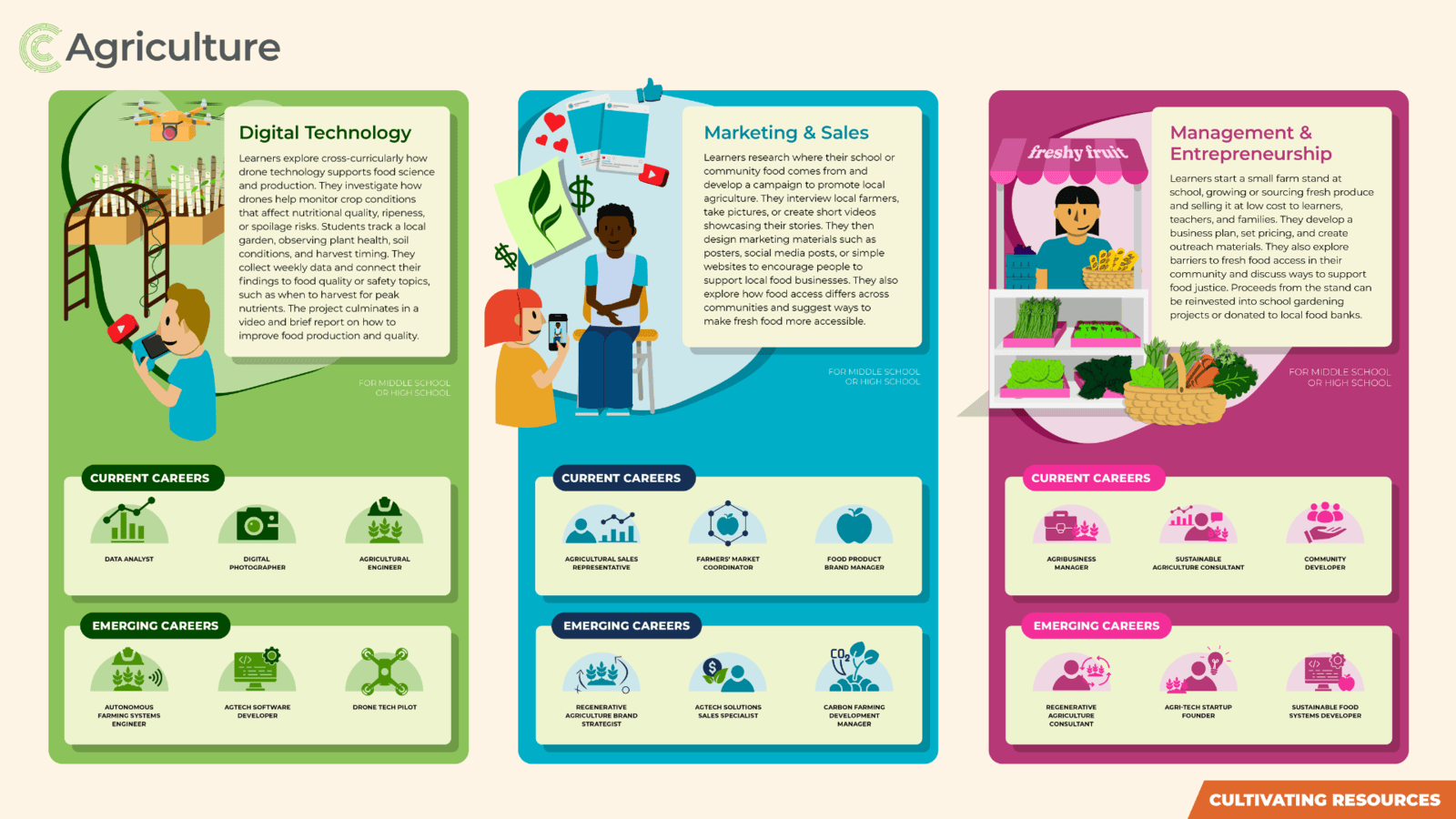
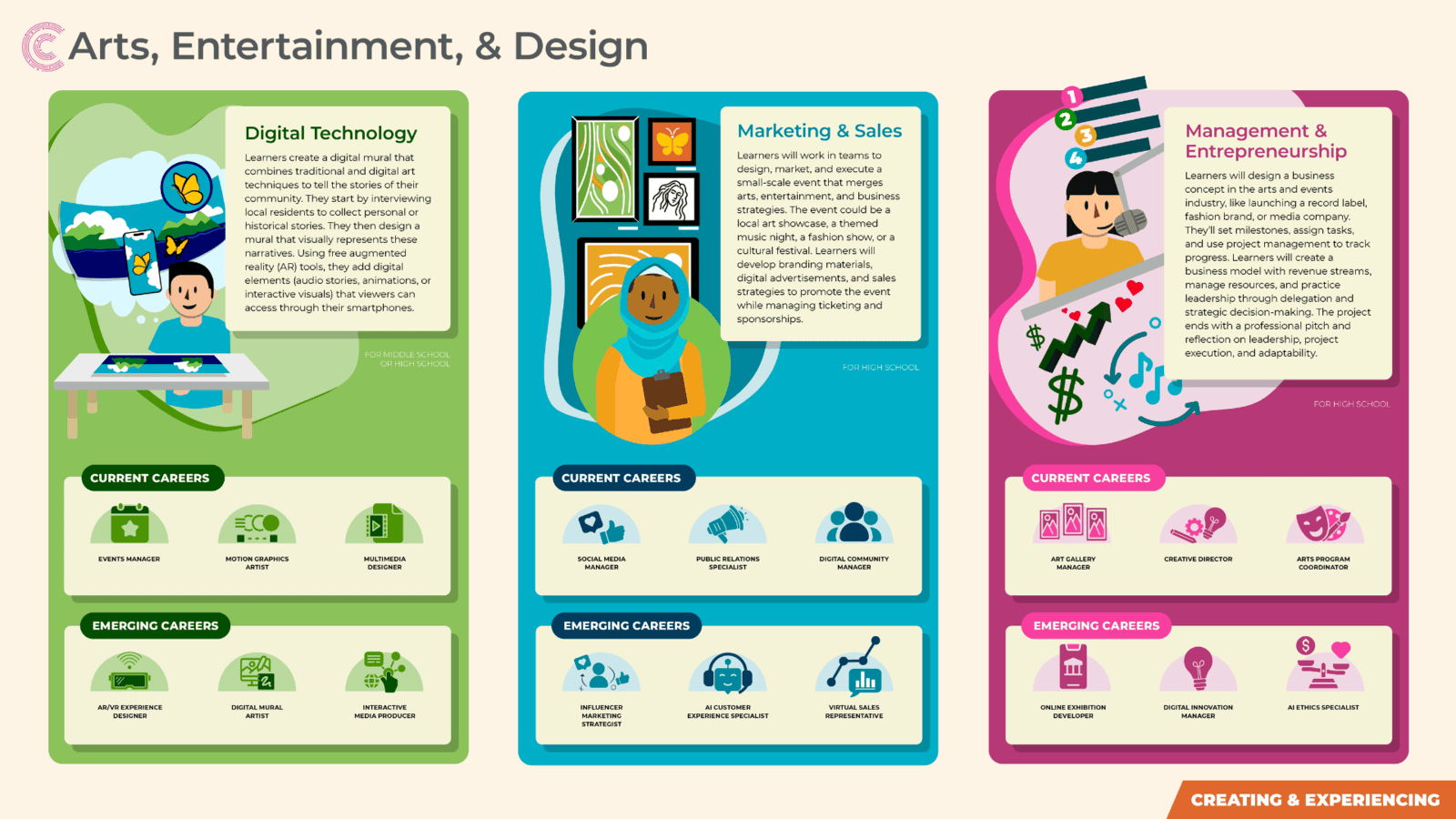
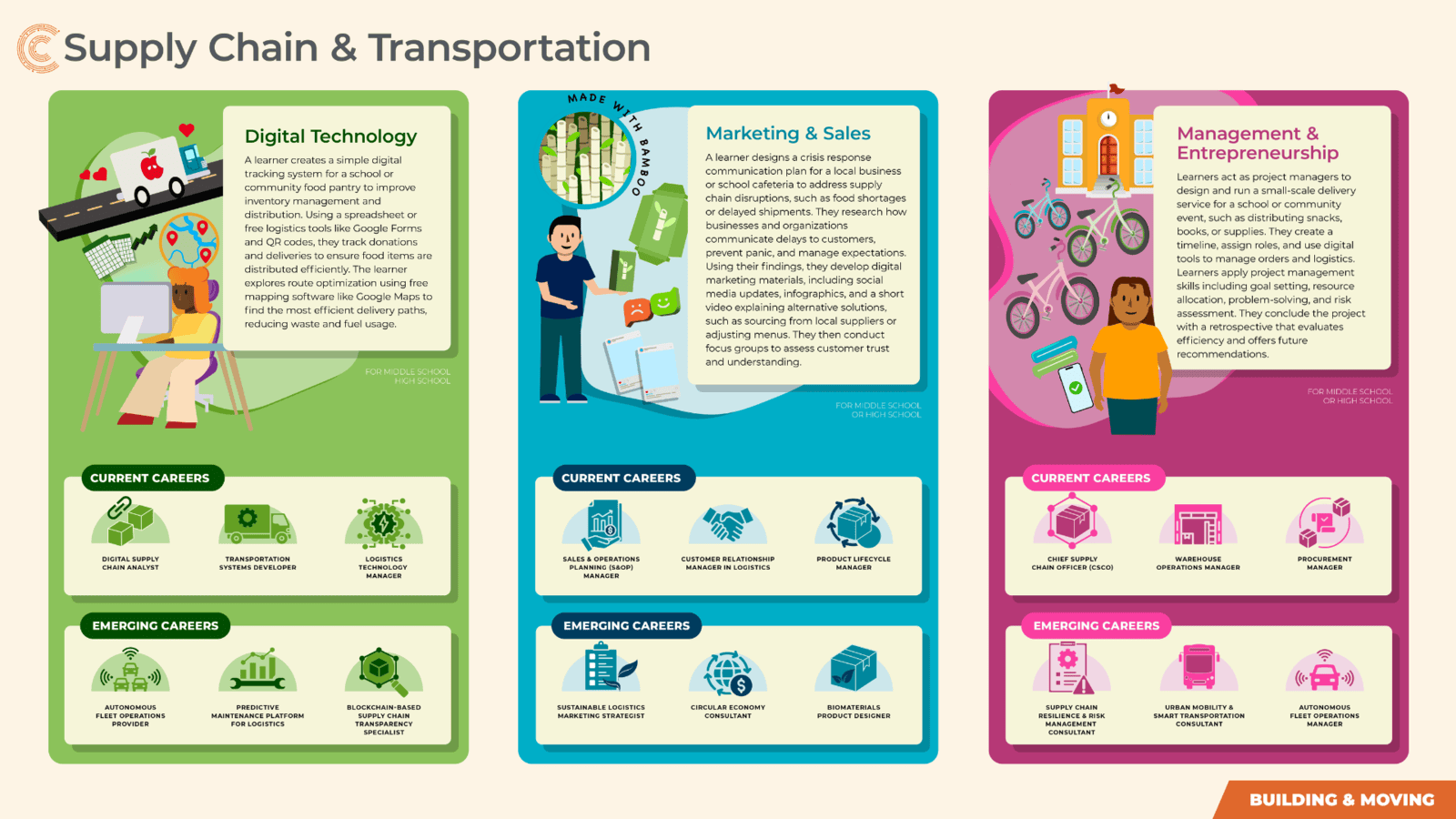
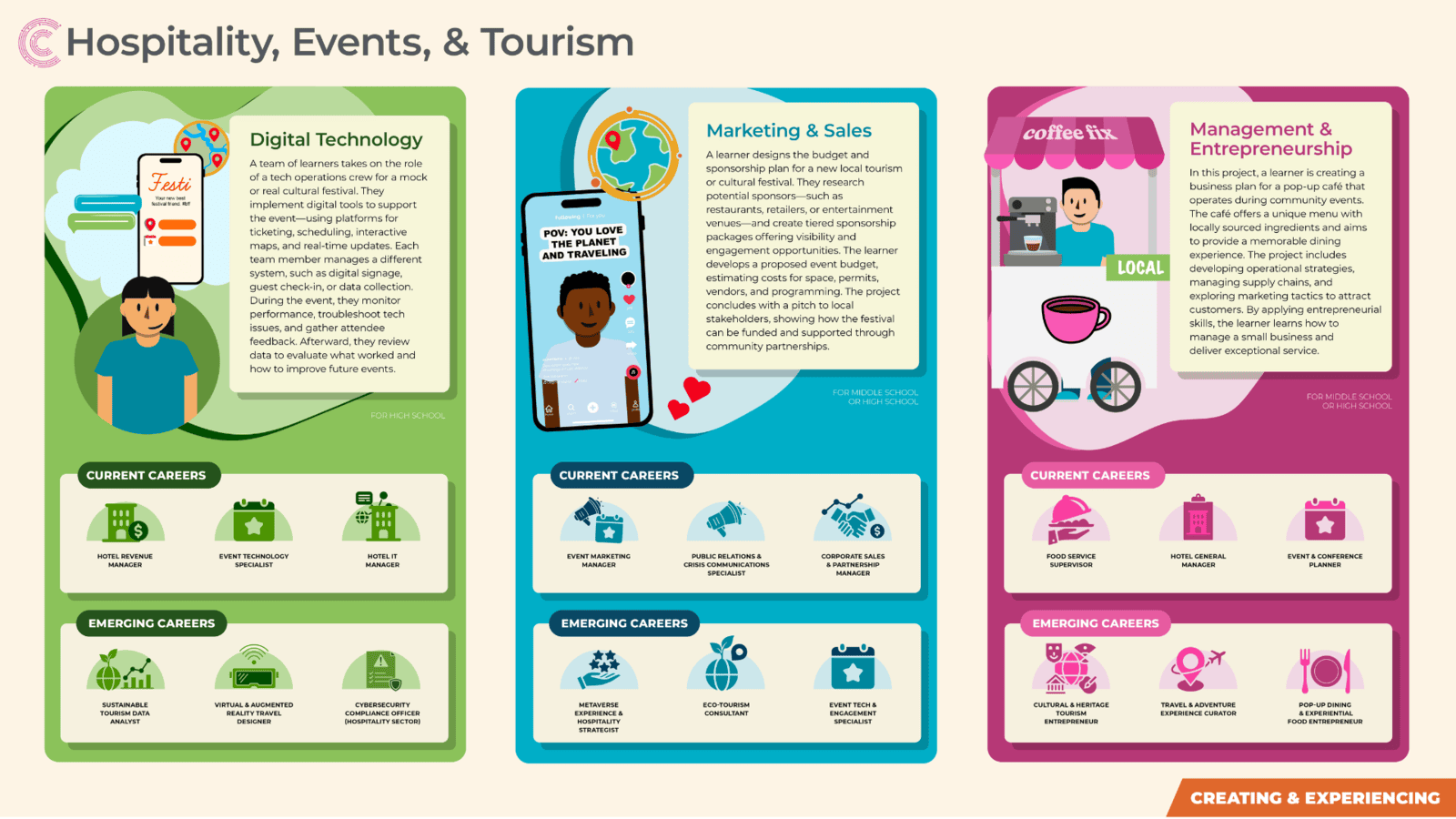
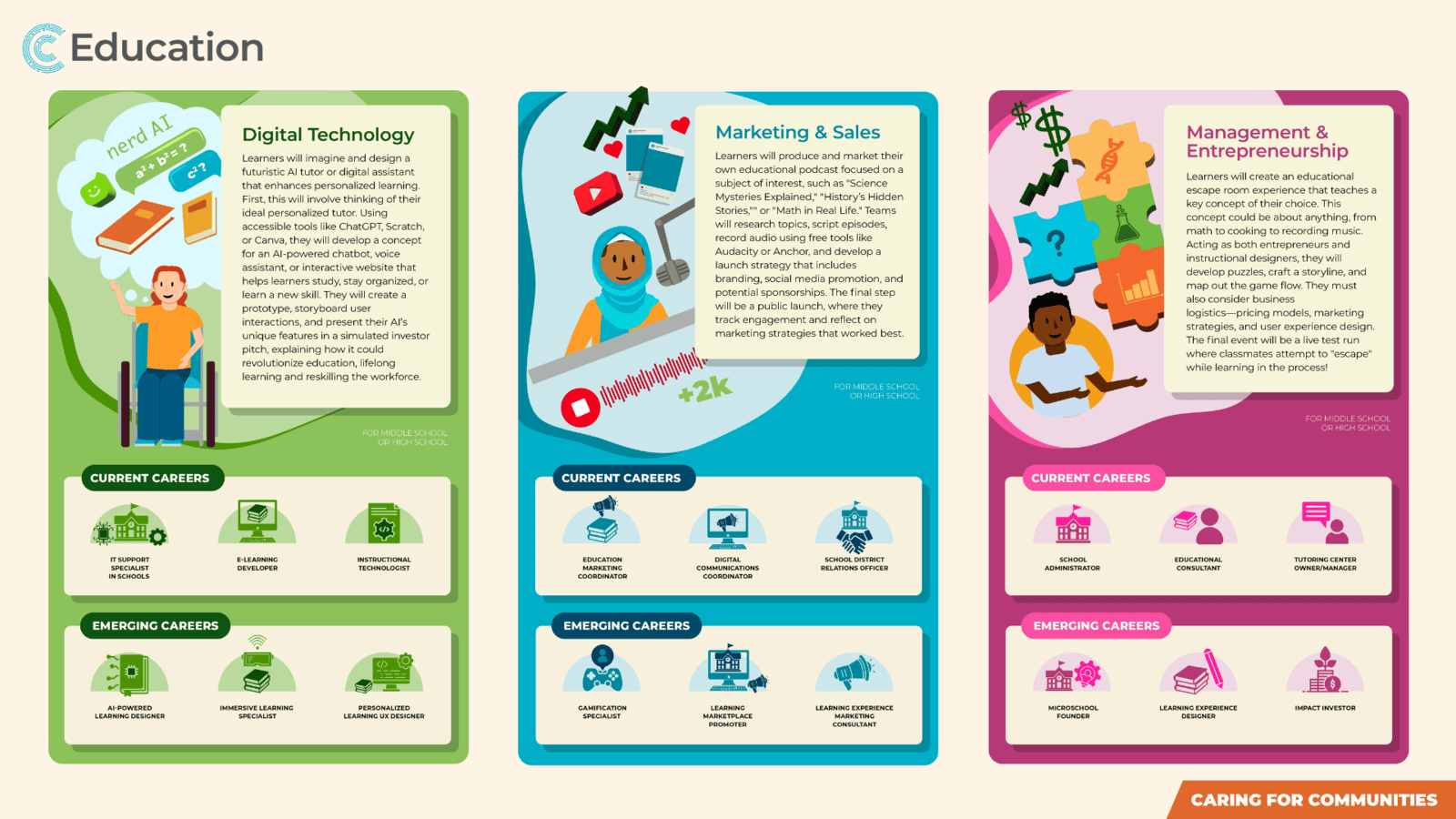
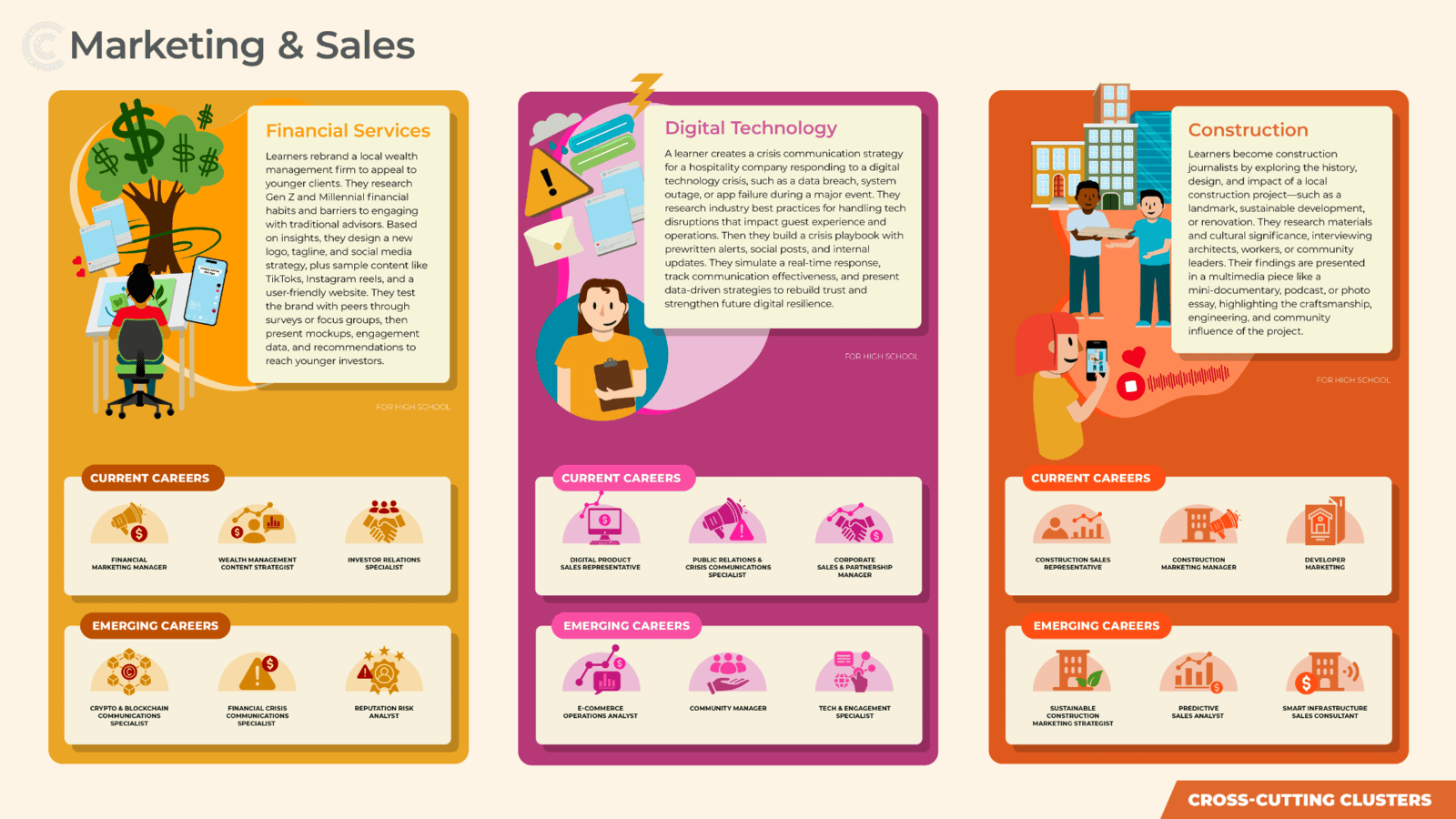
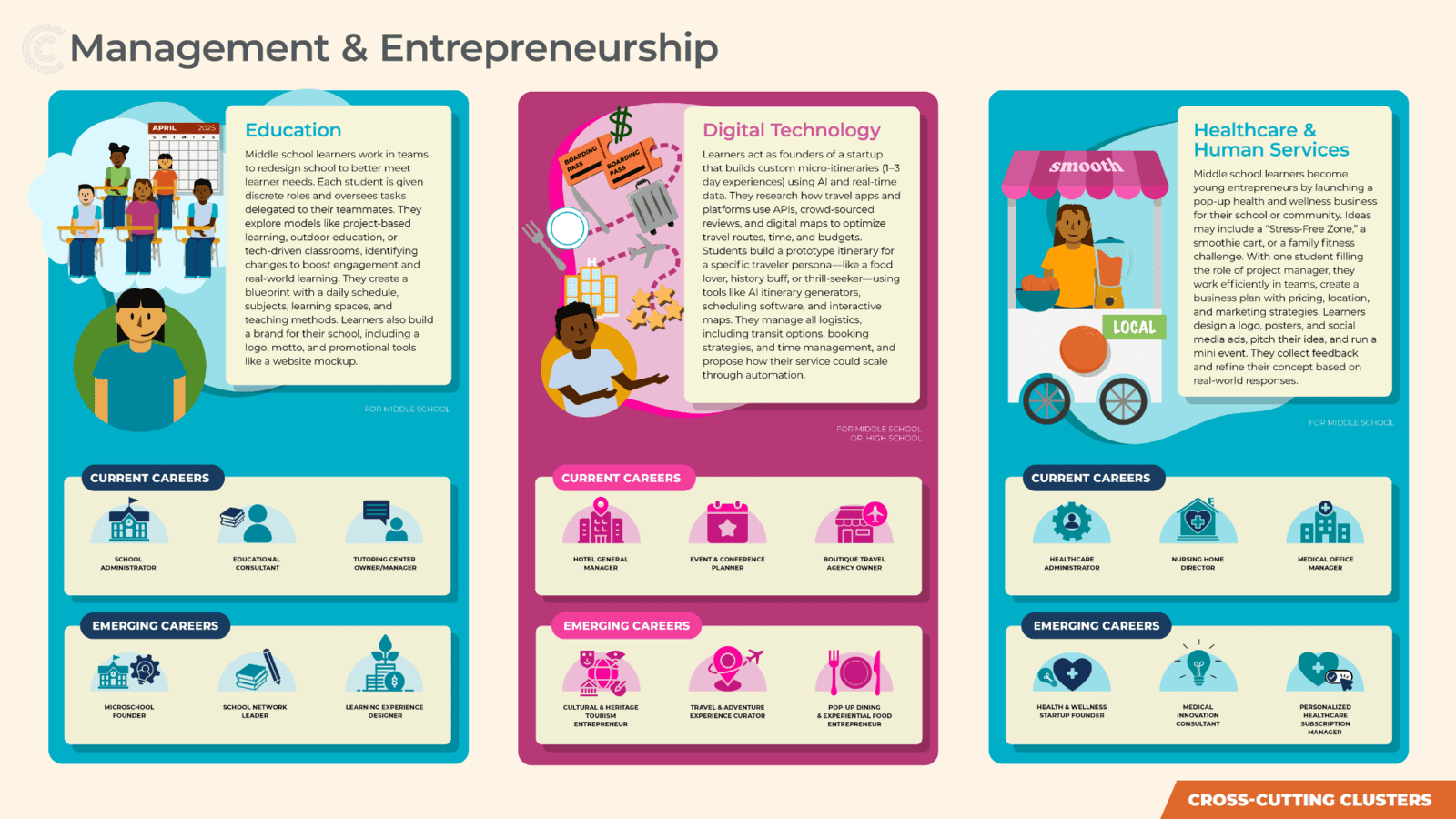
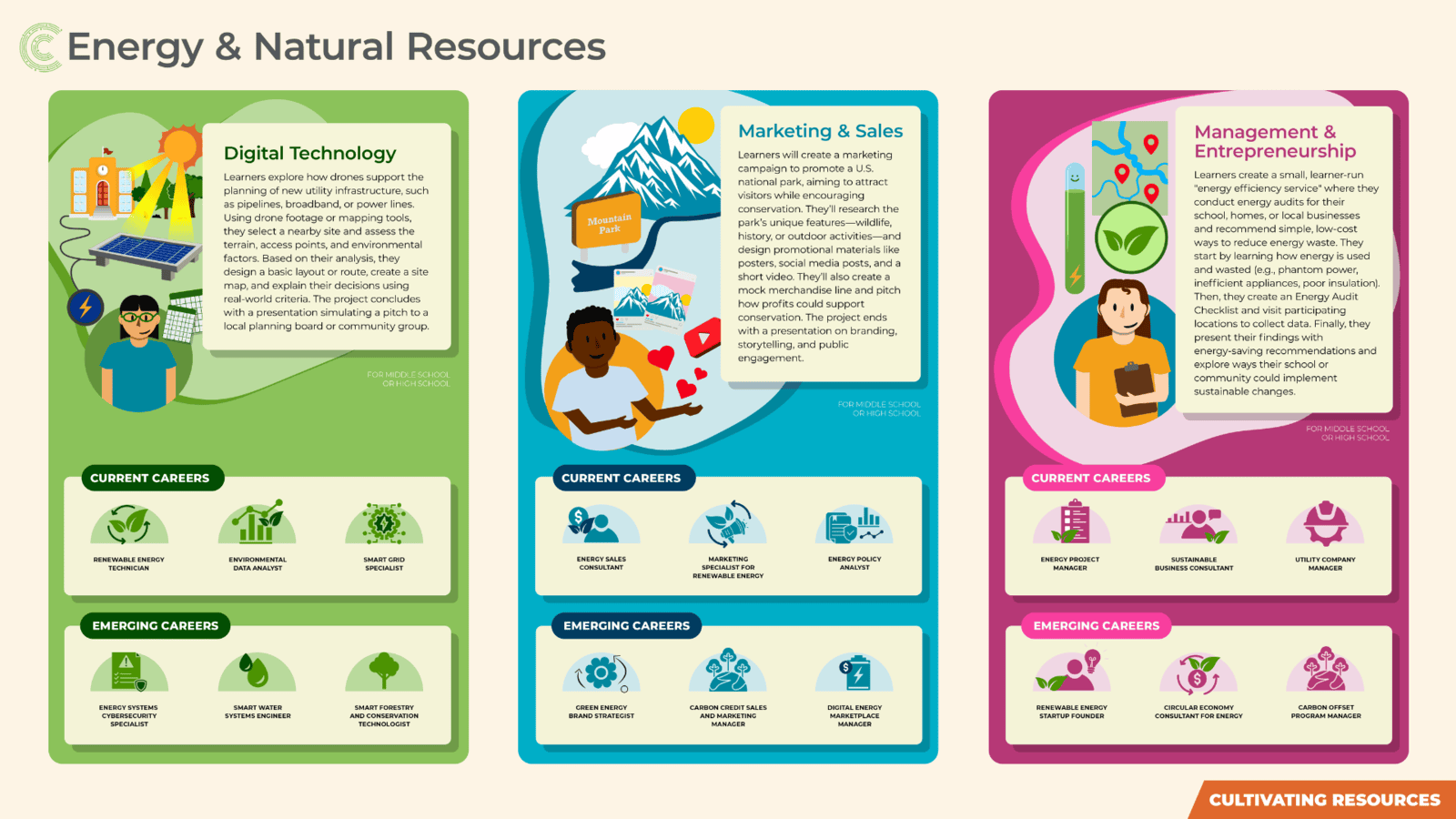
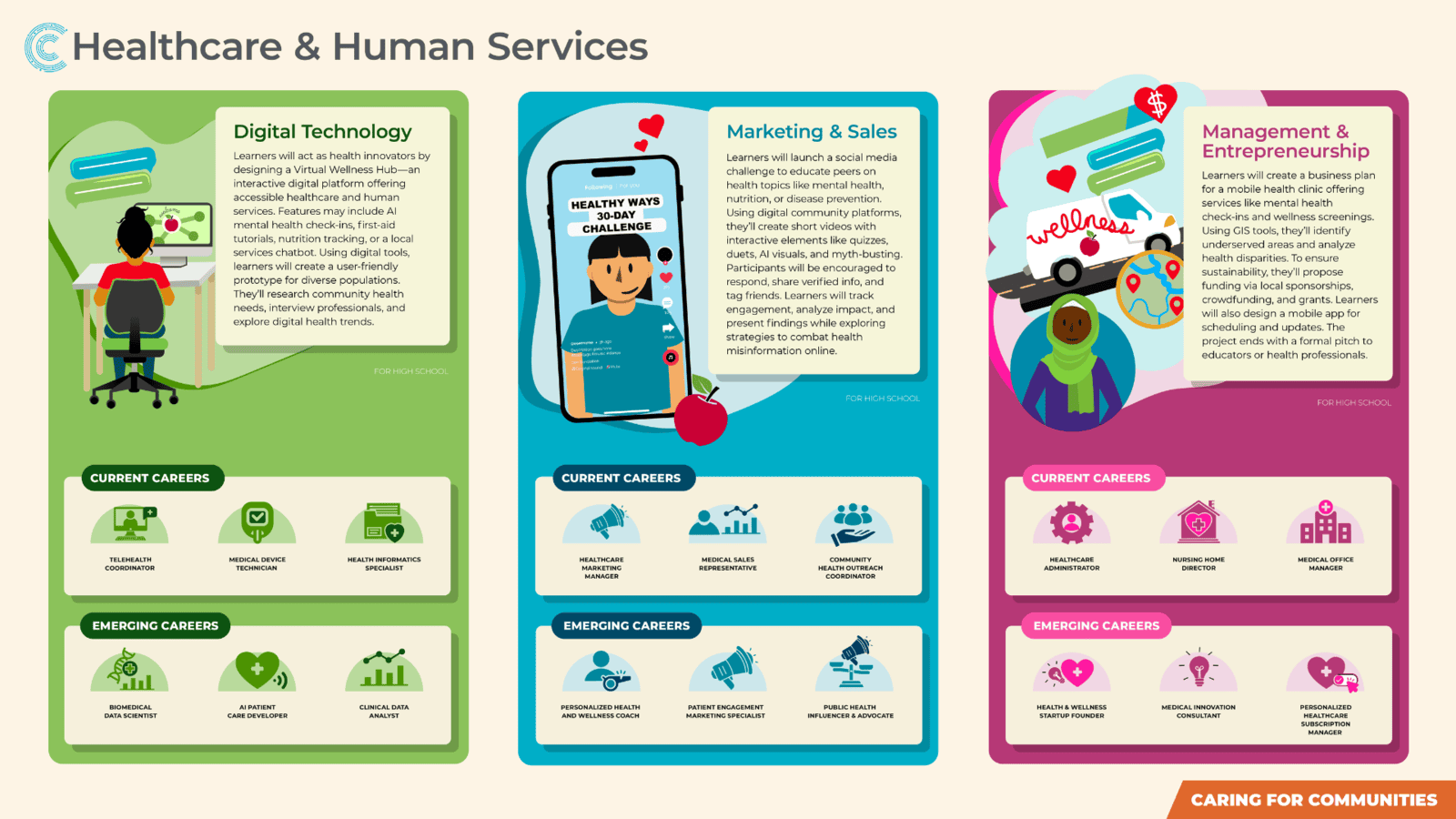
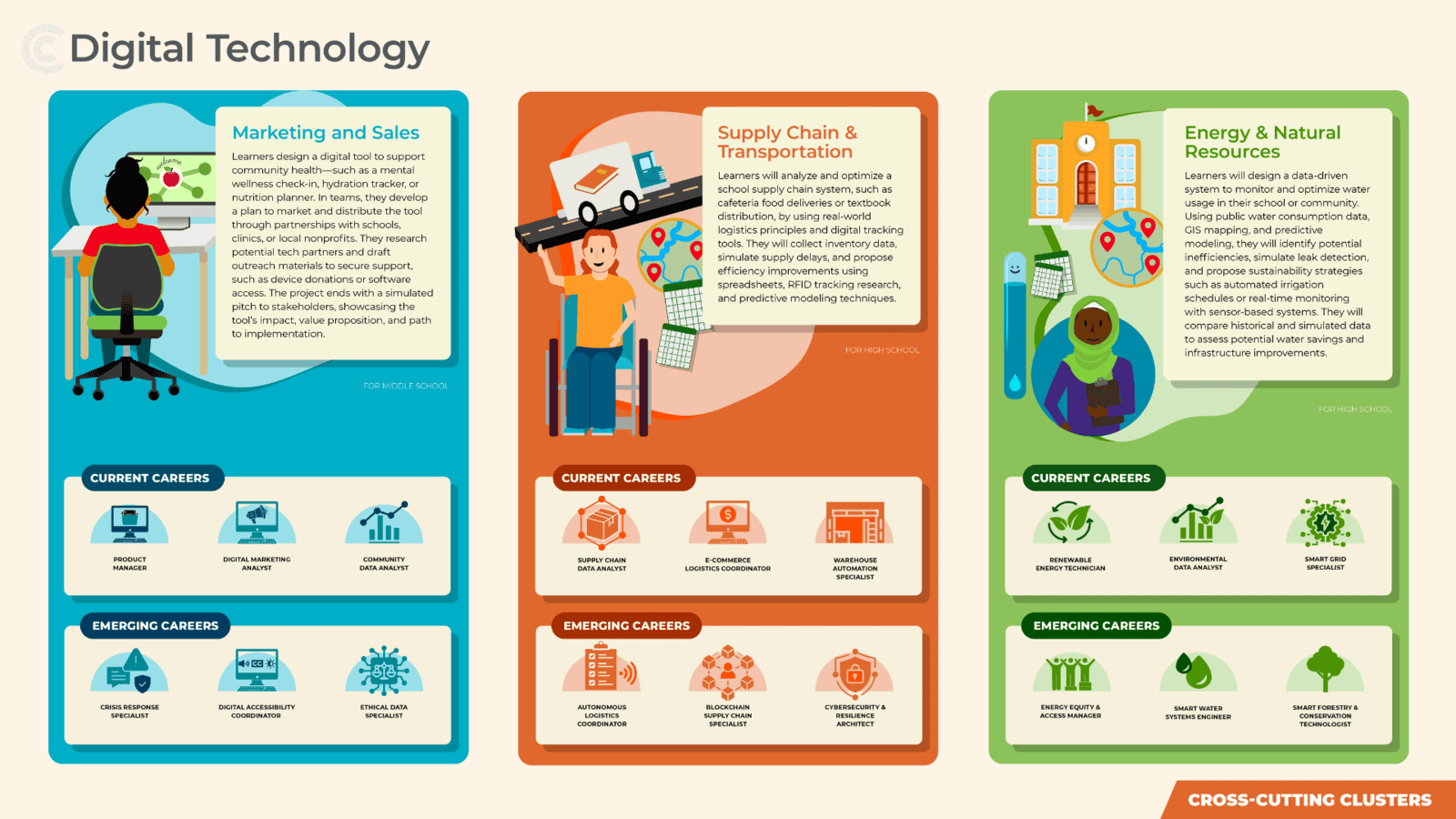
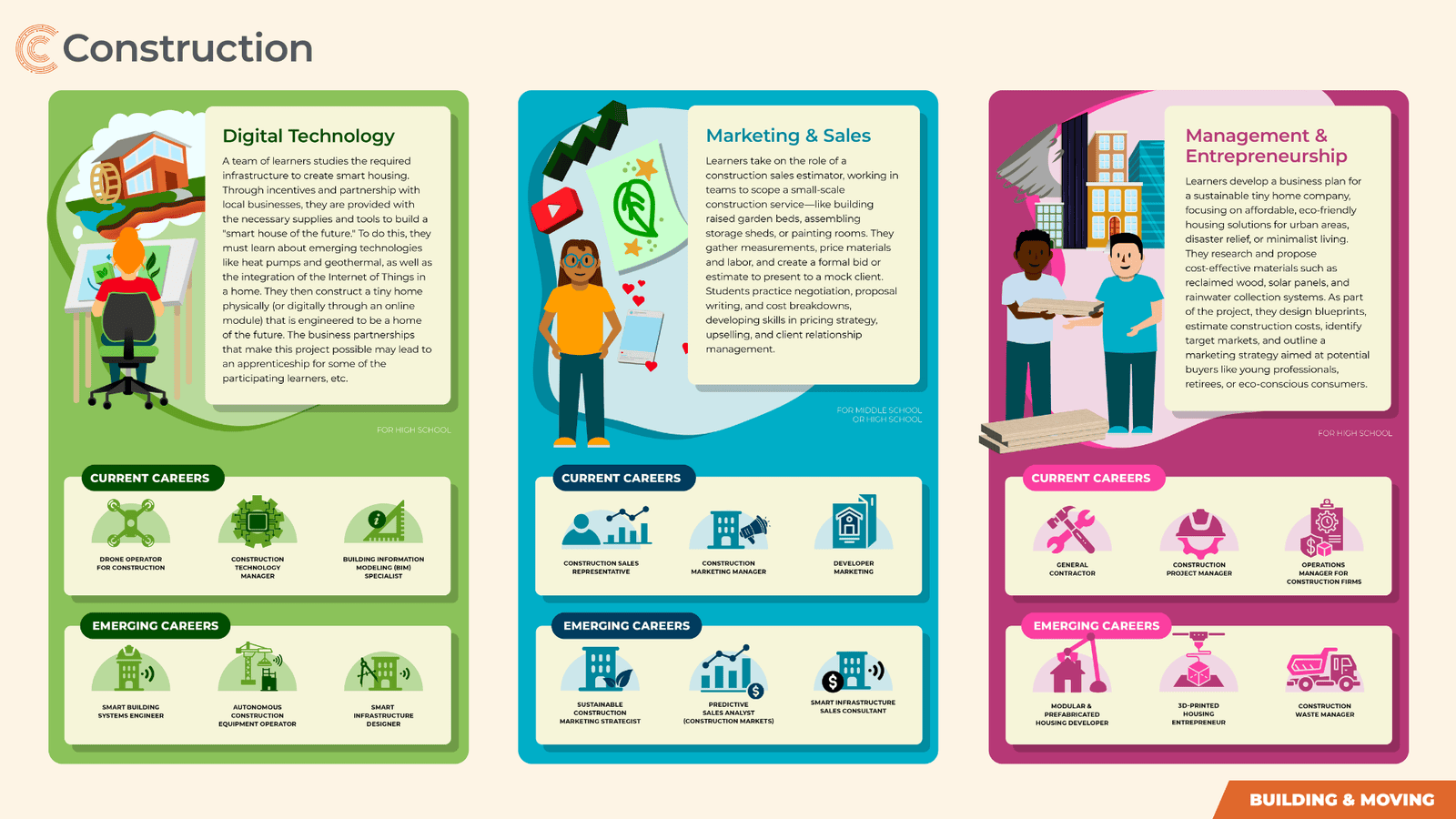
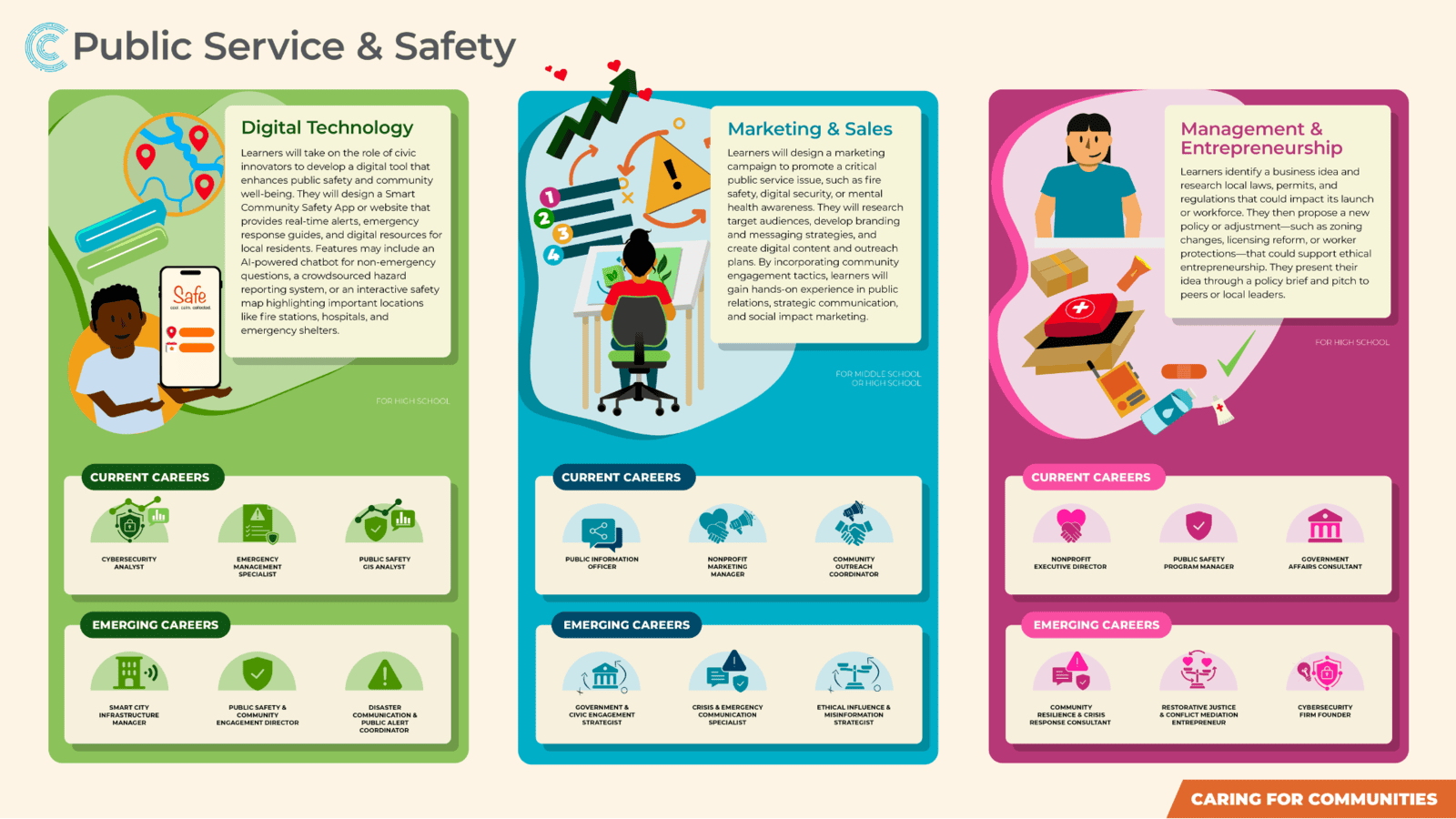
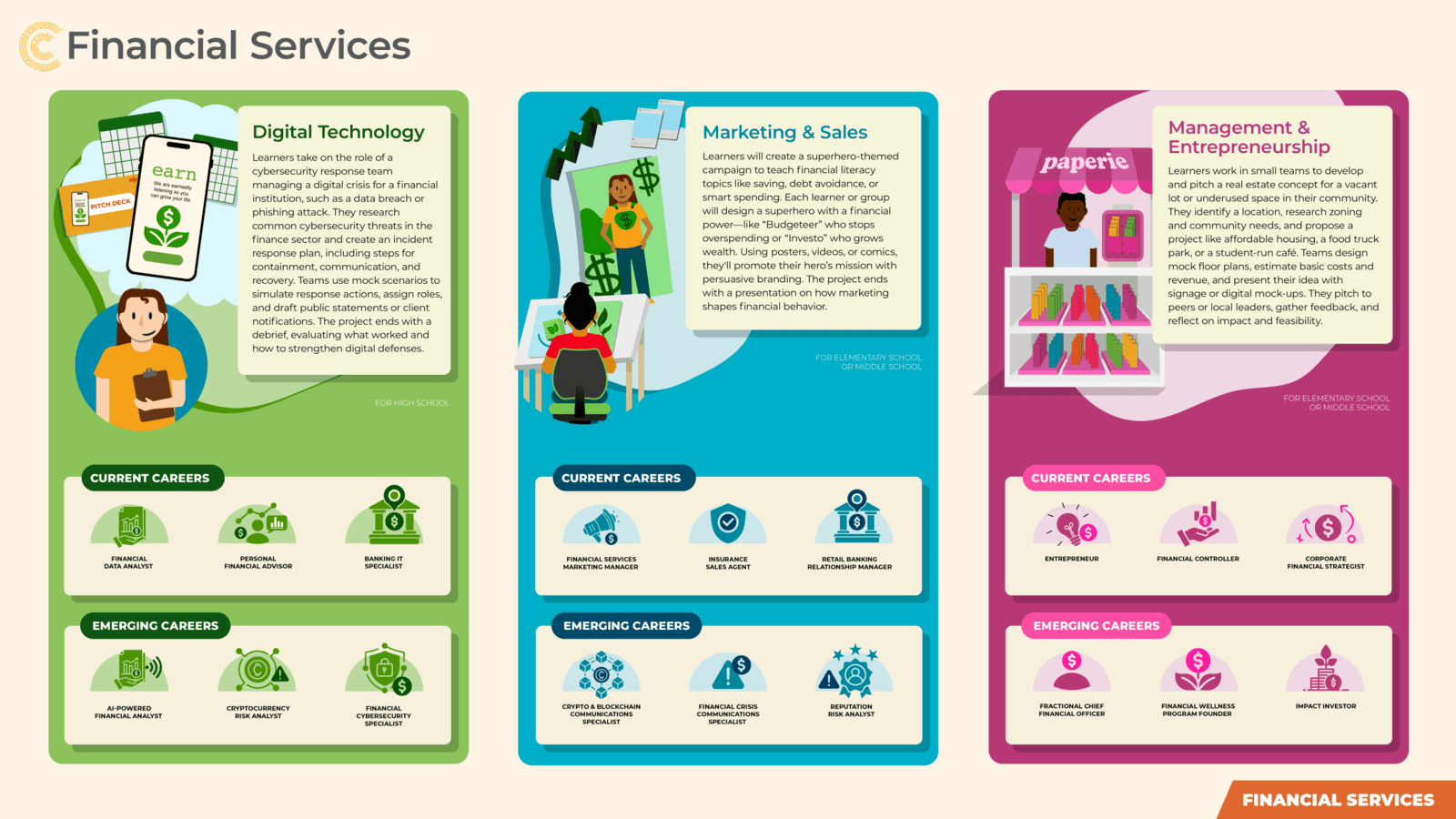
Career Ready Practices
All the clusters revolve around a central pillar of 12 career ready practices that include 30 more specific job skills in each practice. The following table includes the practices and skills as well as an alignment between them and our WIN Career Readiness System courseware modules.
| Career Ready Practice | Skills | Aligned WIN Module |
| Lead as a contributing & professional employee | Reliability, consistency, leadership, ethics | Soft Skills:
|
| Communicate clearly, effectively, & with reason | Verbal, written, & visual communication, active listening, presentation skills, persuasion | Academic Skills:
Digital Skills:
Soft Skills:
|
Think critically to make sense of problems & persevere in solving them | Analytical thinking, problem-solving, research skills, logical reasoning, continuous improvement | Academic Skills:
Soft Skills:
|
| Collaborate productively while using cultural & global competencies | Teamwork & collaboration, conflict resolution, cultural awareness & competence, networking, empathy, recognizing and mitigating biases | Soft Skills:
|
| Use digital skills & technologies to enhance productivity & make data-informed decisions | Proficiency with digital tools, data analysis, adaptability to new technologies, continuous learning, technology integration | Academic Skills:
Digital Skills:
|
| Remain resilient in a changing workplace & world of work | Resilience, stress management, lifelong learning, change management, adaptability, mindfulness | Soft Skills:
|
| Manage time & space effectively | Prioritization, task management, goal-setting, delegation, organization | Soft Skills:
|
| Demonstrate a creative & innovative mindset | Brainstorming, design thinking, creative problem-solving | Soft Skills:
|
| Act as a good steward of organizational & personal finances & resources | Budgeting, financial planning, risk assessment, cost-benefit analysis | Academic Skills:
Soft Skills:
|
| Navigate an education & career path aligned to strengths, work style, interests, & goals | Self-awareness, self-assessment, goal-setting, feedback utilization, emotional intelligence | Soft Skills:
MyWorkReady Career Exploration Platform |
| Consider the environmental & social impacts of decisions | Ethical decision-making, integrity, community awareness, sustainable practices | Soft Skills:
Academic Skills:
|
| Apply appropriate academic & technical skills | Industry-specific tool use, technical problem solving, continuous learning | Academic Skills:
Digital Skills:
|
Conclusion
Once you get to know the new NCCF, we think you’ll agree that it provides a much more structured scaffolding for new and experienced job seekers alike. The O*NET Database has been updated to reflect the new framework, as well, in order to provide a consistent approach to career exploration across the nation. To find additional resources for administrators, practitioners, and students, visit the National Career Clusters Framework website!
